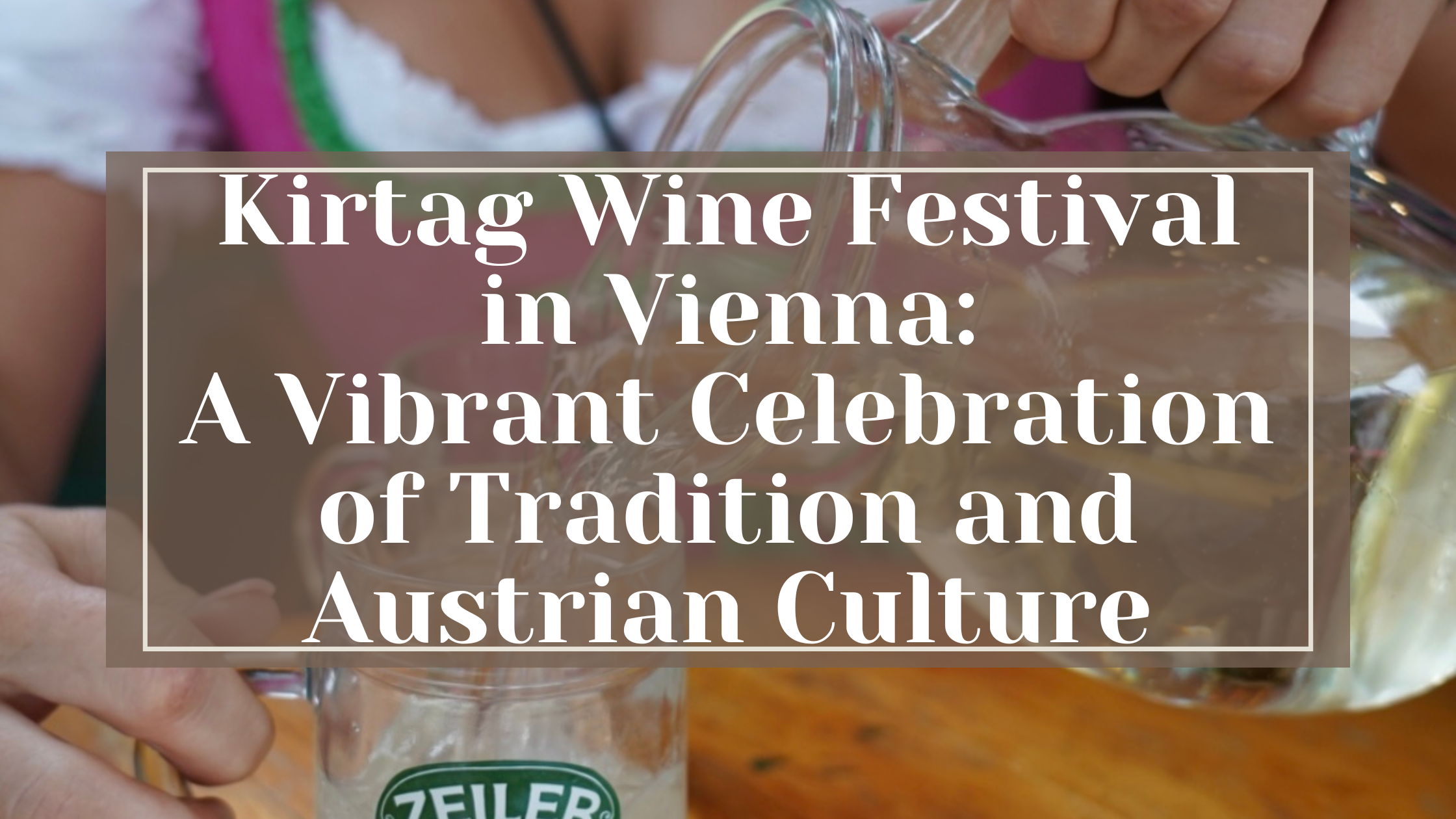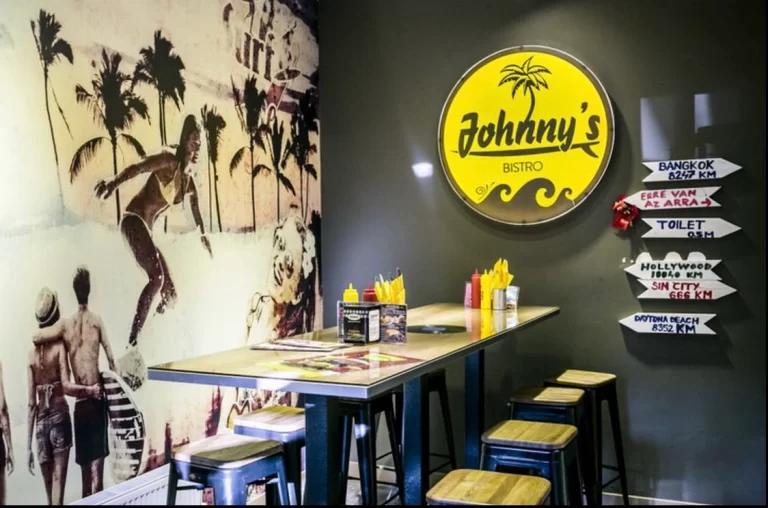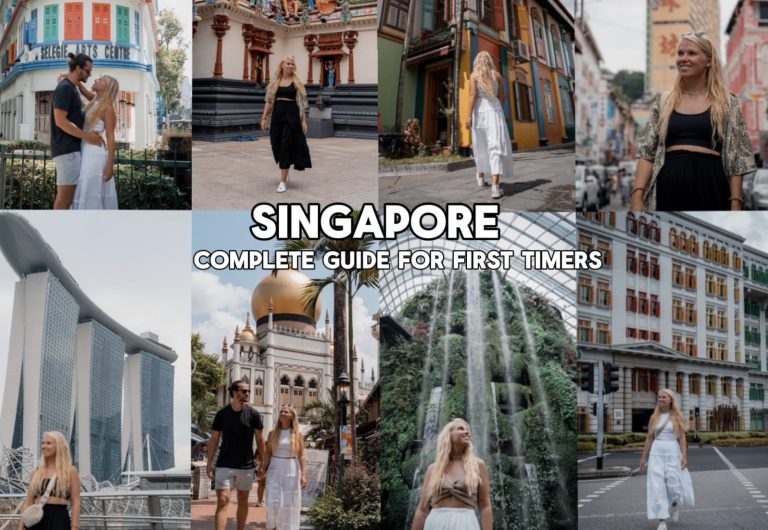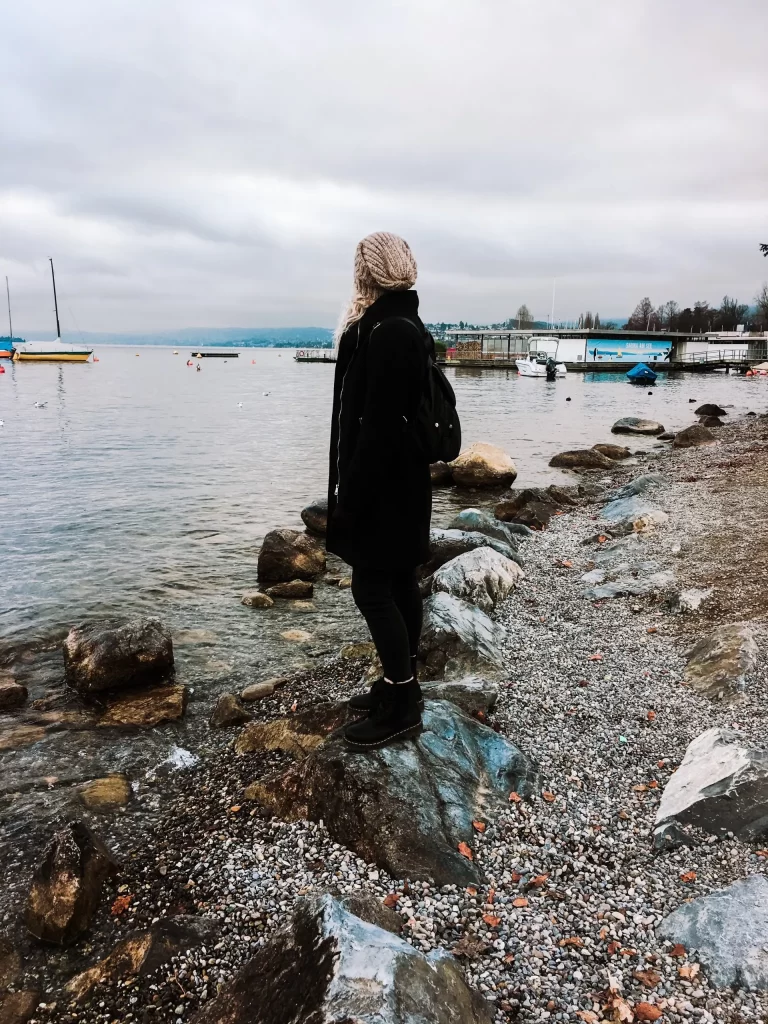Kirtag Wine Festival in Vienna: A Vibrant Celebration of the Tradition and Austrian Culture
Kirtag Wine Festival in Vienna: A Vibrant Celebration of the Tradition and Austrian Culture
The Kirtag Wine Festival in Vienna, Austria, is a beloved annual event that brings together wine enthusiasts, locals, and tourists to celebrate Austrian culture and tradition. Set against the charming backdrop of Vienna, this lively festival showcases a rich selection of local wines, accompanied by traditional music, food, and vibrant festivities. Whether you’re a connoisseur of fine wines or simply looking to experience authentic Austrian hospitality, the Kirtag Wine Festival offers a unique blend of heritage and flavor. Join the celebration and discover why this festival is a must-visit event in Vienna.
- Quick Guide
- What is Kirtag
- When to Visit
- How to Get to Kirtag
- Accommodation
- What to Eat & Drink
- Best Heurigers
- Tickets & Reservations
- Dress Code
- Top Activities
- Similar Festivals
In a Rush? Pin it to Read Later!
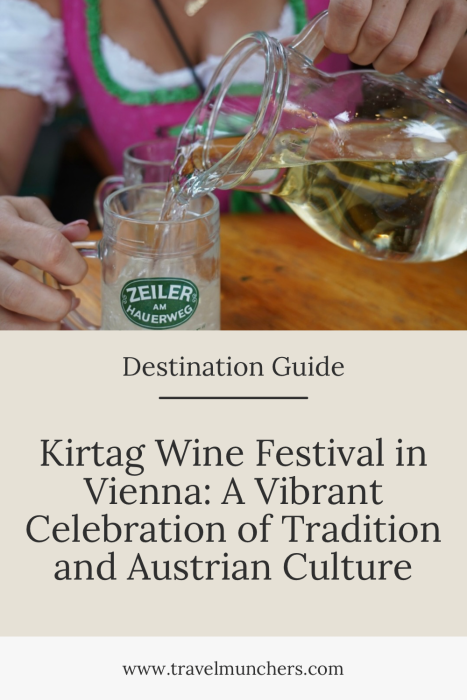
Copyright Notice: All material on this travel blog site is the sole property of Travel Munchers. This includes blog posts, pages, design and all photos (whether watermarked or not). Any use of materials from this site without express written consent will be considered copyright infringement.
Disclaimer: Some items contain affiliate links and I will get a small commission at no additional cost to you. I really appreciate your support if you like my recommendations!
Quick Guide
Currency: Euro, Credit Cards are accepted in some but not all Heurigers and stalls
Drinking age: In Austria the legal drinking age for wine and beer is 16, while hard liquor is 18. There is no age requirement to enter the festival, but some of the Heurigers will have age limits during certain times of the day.
Primary Language: German (Viennese dialect of the “Austrian” German).
Important Phrases:
- Prost! – Cheers!
- Ein Glas Wein, bitte. – A glass of wine, please.
- Könnten Sie mir etwas empfehlen? – Could you recommend something to me?
- Rotwein oder Weißwein? – Red wine or white wine?
- Wie viel kostet das? – How much does that cost?
- Ist dieser Wein trocken oder süß? – Is this wine dry or sweet?
- Ich hätte gerne einen lokalen Wein. – I would like a local wine.
- Kann ich eine Weinprobe machen? – Can I have a wine tasting?
- Das schmeckt sehr gut! – That tastes very good!
- Wo ist das nächste Weingut? – Where is the nearest winery?
- Haben Sie einen alkoholfreien Wein? – Do you have non-alcoholic wine?
- Könnte ich eine Flasche davon kaufen? – Could I buy a bottle of that?
- Sind Reservierungen erforderlich? – Are reservations required?
- Gibt es etwas zu essen? – Is there something to eat?
- Danke für den tollen Wein! – Thank you for the great wine!
What is Kirtag?
History of Kirtag
The story goes that sometime in the mid 1700s, local wine growers sent a delegation to the empress of the time (Maria Theresa) requesting an easing of the tax burden following a notably bad harvest. Apparently, Maria Theresa looked favorably on the request but under the condition that Neustift should hold an annual Kirtag (a kind of parish fair). And so a tradition was born, which includes, for example, the daily procession of a Hauerkrone (a crown of produce initially presented to the empress as a gift of supplication and thanks).
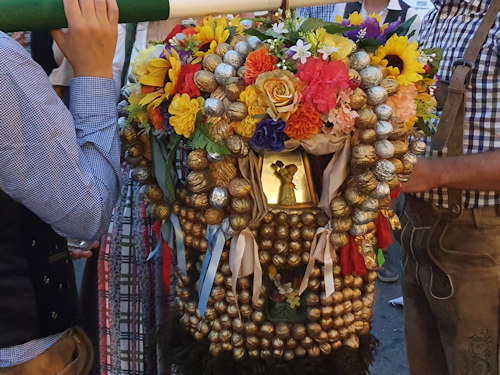
What Happens at Kirtag?
For four days, a roughly 650m stretch of suburban road turns into a pedestrianized market and gastronomy mile. Stands line the way selling all the sorts of products you might expect at a Viennese street market. Many specialise in traditional food, snacks and drink. You might also come across the occasional small fun-fair ride or booth.
When to Visit
The dates apparently follow the feast day of St. Rochus which tend to land towards the end of the Month of August. The festival last 4 days, always Thursday – Sunday. Each day has unique activities while some activities can be enjoyed every day. Here is an example of the 2024 schedule to get an idea of how the days are organized.
Thursday
From 3:00 pm – Market stalls for strolling & shopping
5:30 pm- Meeting point of the Hauerkrone at the whistle
6:00 p.m. – Opening at Buschenschank Wolff from
6:30 p.m.- Relocation of the Hauerkrone & happy get-together
11:00 pm – Entry of the Hauerkrone at Eischer ‘s
Midnight – Official Kirtags afterparty in the Babenberger Passage
Friday
Market stalls for strolling & shopping – 17:00
Excerpt of the Hauerkrone at Eischer’s – From 17:00
Relocation of the Hauerkrone & happy get-together- 9:00 p.m.
Entry of the Hauerkrone at the Weinhof Zimmermann- From 11:00 p.m.
Official Kirtags afterparty in the Babenberger Passage – Midnight
Saturday
From 12:00 p.m.- Market stalls for strolling & shopping
Extract of the Hauerkrone at the Weinhof Zimmermann – From 5:00 p.m.
Relocation of the Hauerkrone & happy get-together
Entry of the Hauerkrone at the Friseurmüller from 11:00 p.m.
Official Kirtags afterparty in the Babenberger Passage
Sunday
10:00- Field fair at Friseumüller
From 2:00 p.m. – Excerpt of the Hauerkrone at Eischer’s
3:00 pm- Consecration and Hiatabaum setting up at the Zeiler on Hauerweg
From 3:00 pm- Moving with the Hauerkrone
5:00 p.m.- Entry of the Hauerkrone at the Schreiberhaus
From 11:00 p.m.- Official Kirtags afterparty in the Babenberger Passage
How to Get to Kirtag
You’re out in the suburbs now, so a taxi is a strong option here. One of the simplest ways to get there is by taking the S45 city train to Krottenbachstraße, then the 35A bus from outside the station up to one end of the Kirtag (Neustift / Agnesgasse stop).
You can catch the 35A elsewhere, for example at the U6 subway station Nußdorfer Straße,
The S45 connects to the subway network, for example, at Hütteldorf (U4 line), Ottakring (U3), Heiligenstadt (U4) and Handelskai (U6).
The transport authorities (Wiener Linien) always do a grand job at big events of shortening intervals and managing people, but note that the bus will be packed in the afternoon and evenings.
Accommodation
Hotels & Apartments:
If you want the chance to look for a wide variety of accommodations, in a full price range, here is you best search options:
Hostels:
If you are more interested in parties, nightlife and having automatic meet ups then maybe a hostel is for you! Check out the options here.
What to Eat & Drink at Kirtag
What to Eat
Grillhendl / Backhendl
Backhendl and Grillhendl are two popular Austrian dishes that highlight the country’s love for hearty, flavorful chicken preparations. Backhendl is a traditional dish that features chicken pieces, typically marinated and breaded, then fried to crispy perfection. This dish has roots in Austrian and Bavarian cuisine and is often served with a side of potato salad or lemon wedges for added freshness. Grillhendl, on the other hand, is a classic rotisserie chicken, seasoned with a variety of herbs and spices, then slowly grilled over an open flame until the skin is perfectly crisp and the meat tender and juicy. Both dishes are staples at Austrian festivals and beer gardens, offering a delicious taste of Austria’s culinary heritage.

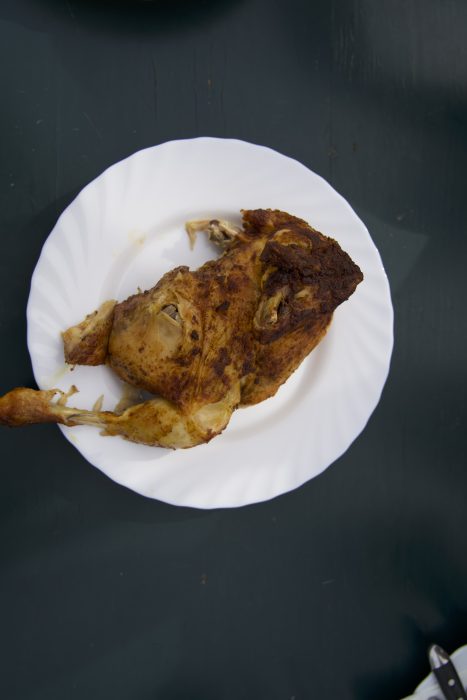
Pretzels / Brezel
Austrian pretzels, known locally as Brezn or Brezel, are a beloved snack with deep roots in Austrian and Bavarian culture. These golden-brown, twisted treats are known for their crisp, salty exterior and soft, chewy interior, often sprinkled with coarse salt or seeds. Traditionally enjoyed at beer gardens and festivals, pretzels are a perfect companion to hearty Austrian dishes and local beers. In Austria, pretzels can be found in various sizes, from small snack-sized bites to large, shareable ones, and are sometimes served with mustard, salt or butter. Whether eaten as a snack or part of a meal, Austrian pretzels are a delicious symbol of the country’s rich culinary tradition.


Schnitzel
Austrian schnitzel, most famously known as Wiener Schnitzel, is a quintessential dish in Austrian cuisine, celebrated for its simplicity and flavor. Traditionally made from thinly pounded veal, the schnitzel is coated in flour, egg, and breadcrumbs, then fried to a crispy, golden perfection. This iconic dish is often served with a slice of lemon, parsley, and sides like potato salad, lingonberry sauce, or warm buttered potatoes. While veal is the classic choice, variations with pork or chicken are also popular. Austrian schnitzel is a symbol of the country’s culinary heritage, offering a delicious and satisfying meal that is enjoyed both at home and in restaurants across Austria.
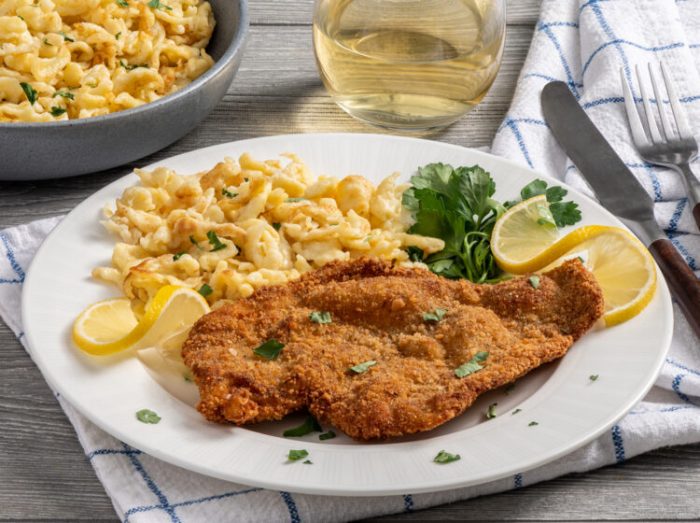
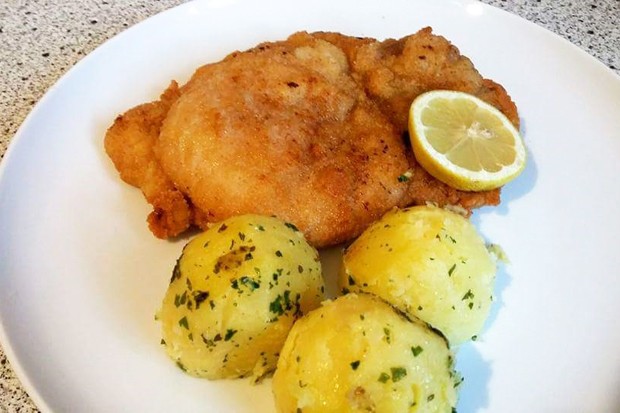
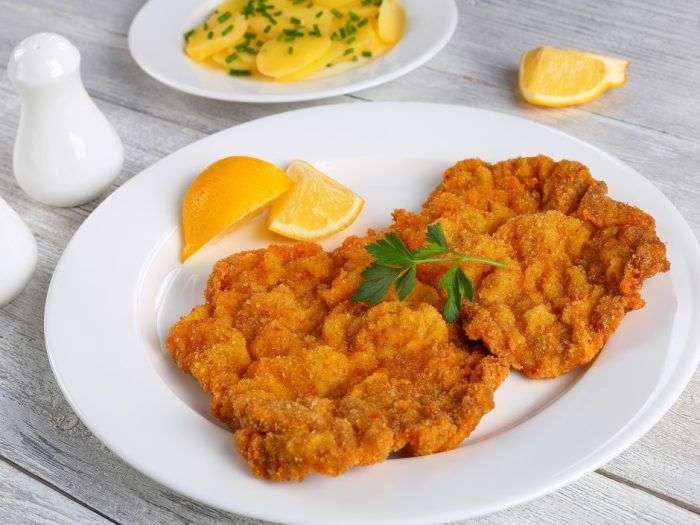
Pommes / Bratkartoffel / Kartoffelpuffer
Austrian cuisine celebrates potatoes in a variety of delicious forms, each offering its own unique flavor and texture. Pommes (French fries) are a popular snack or side dish, typically served crispy and golden, often accompanied by ketchup or mayonnaise. Kartoffelpuffer are savory potato pancakes, made from grated potatoes mixed with flour and eggs, then pan-fried to create a crisp exterior with a soft, tender inside. These are often served with sour cream or apple sauce. Bratkartoffeln are fried potatoes, usually sliced or cubed and cooked with onions and sometimes bacon, offering a hearty and flavorful side dish that pairs well with meat. Ofenkartoffel, or baked potatoes, are a simple yet satisfying dish, often served with butter, sour cream, or herbs, making them a comforting and versatile part of Austrian meals. Together, these potato dishes reflect Austria’s love for hearty, comforting fare.
Sam Wise, we’re in heaven!

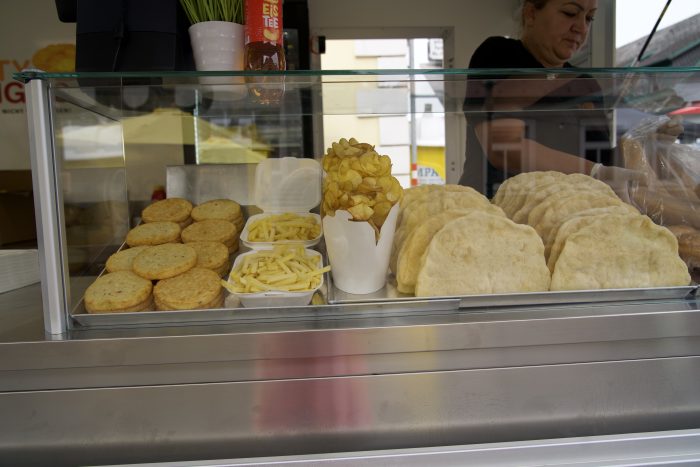
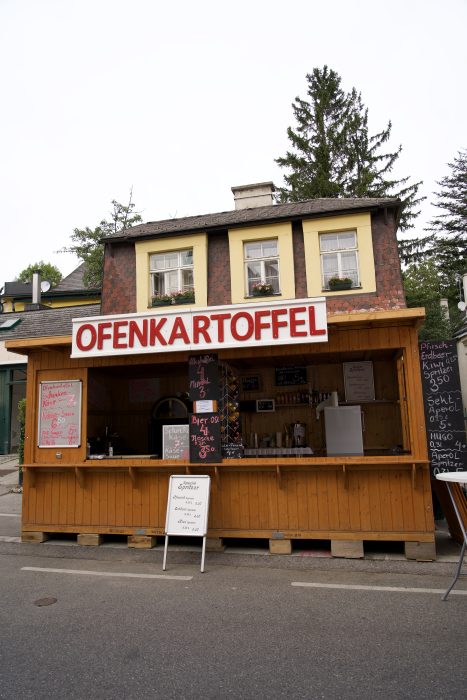
Sausages / Bratwurst / Käserkrainer
Austrian sausages are a cornerstone of the country’s culinary tradition, offering a wide variety of flavors that range from savory to spicy. Bratwurst is one of the most popular, made from finely minced pork and often seasoned with a mix of herbs and spices before being grilled to perfection. Another Austrian favorite is Käsekrainer, a type of sausage filled with melted cheese, which adds a rich, gooey center to the smoky, flavorful sausage. Often served with mustard, sauerkraut, or fresh bread rolls, these sausages are staples at Austrian street markets, beer gardens, and festivals. Whether enjoyed as a quick snack or part of a hearty meal, Austrian sausages like Bratwurst and Käsekrainer offer a delicious taste of Austria’s rich culinary heritage.
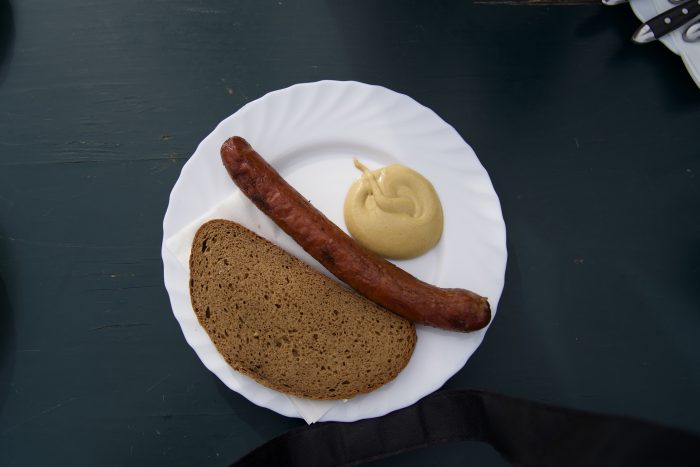
Potato salad / Kartoffelsalat / Erdäpfelsalat
Austrian potato salad, known as Erdäpfelsalat, is a beloved side dish that perfectly complements many traditional Austrian meals, especially Wiener Schnitzel. Unlike the creamy potato salads found in other countries, Austrian potato salad is typically made with sliced boiled potatoes that are tossed in a tangy dressing of vinegar, oil, mustard, onions, and sometimes beef broth, which gives it a slightly warm, savory flavor. Fresh herbs, like parsley, are often added for an extra burst of flavor. The result is a light, flavorful salad that balances richness with acidity, making it a popular choice for both casual meals and festive gatherings in Austria.
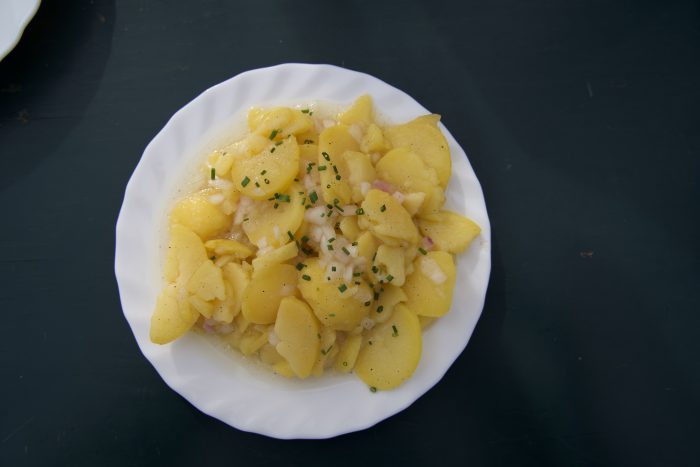
Baumkuchen / Chimney cake
Austrian Baumkuchen, often called the “King of Cakes,” is a unique and intricate dessert that is as much a work of art as it is a culinary delight. Its name, which translates to “tree cake,” comes from its distinctive ringed appearance, resembling the rings of a tree trunk. The cake is made by carefully layering thin coats of batter on a rotating spit, with each layer baked individually, creating a delicate, flaky texture. Once completed, Baumkuchen is often glazed with chocolate or sugar, adding a sweet and glossy finish. Known for its rich flavor and visually stunning presentation, this traditional Austrian cake is a popular treat during celebrations and special occasions, showcasing both the precision and artistry of Austrian baking.
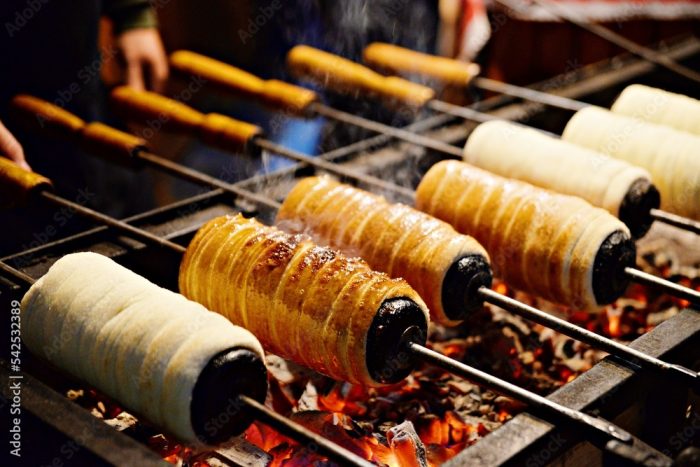
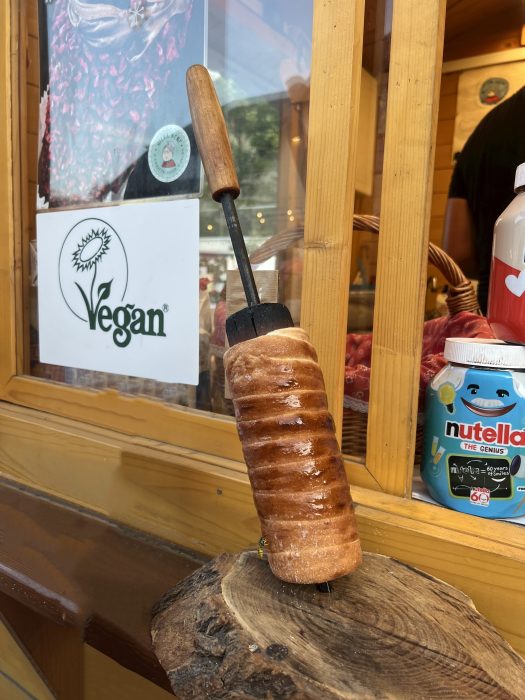
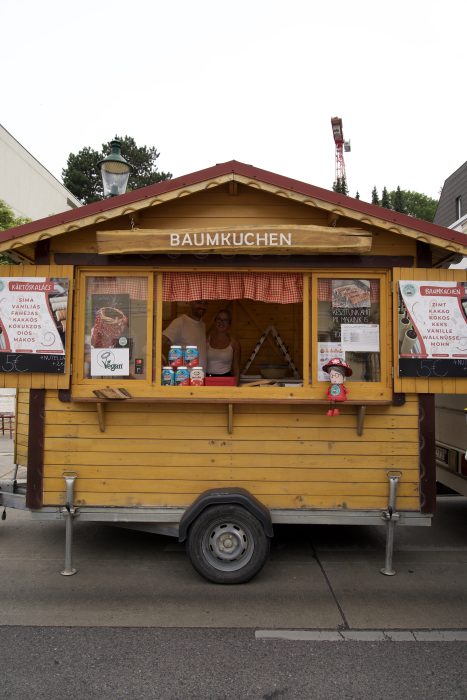
Langos
Austrian Langos is a delicious and popular street food that has its roots in Hungarian cuisine but has become a beloved snack across Austria. This deep-fried flatbread is made from a simple dough of flour, water, and yeast, which is fried until golden and crispy on the outside while remaining soft and fluffy on the inside. Traditionally, Langos is served with a generous topping of garlic butter, but modern variations often include sour cream, grated cheese, or even sweet toppings like sugar or Nutella. Whether enjoyed at a street market, festival, or food stall, Langos is a satisfying and indulgent treat that reflects Austria’s multicultural culinary influences.


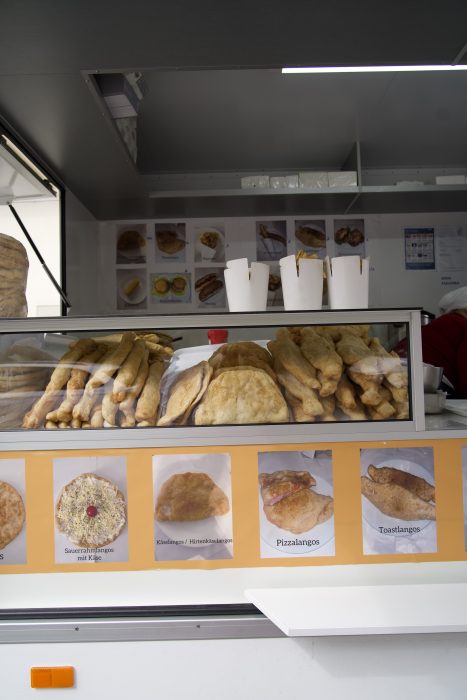
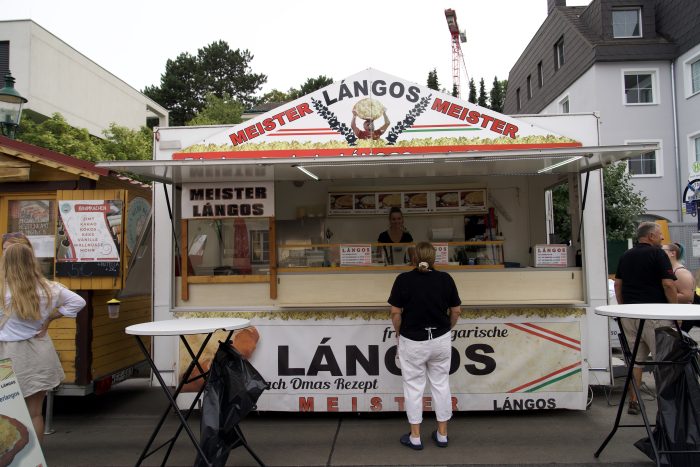
Lebkuchen
Austrian Lebkuchen is a traditional spiced gingerbread that is especially popular during the Christmas season. This festive treat, known for its rich flavors of honey, cinnamon, cloves, and nutmeg, is often shaped into hearts, stars, or other decorative forms. Unlike American-style gingerbread, Lebkuchen has a softer, chewier texture, and is sometimes coated with a thin layer of chocolate or icing. It is a staple at Austrian Christmas markets, where the sweet aroma of freshly baked Lebkuchen fills the air, evoking the warmth and joy of the holiday season. Whether enjoyed with a hot cup of mulled wine or given as a holiday gift, Austrian Lebkuchen embodies the cozy, festive spirit of the country’s Christmas traditions.
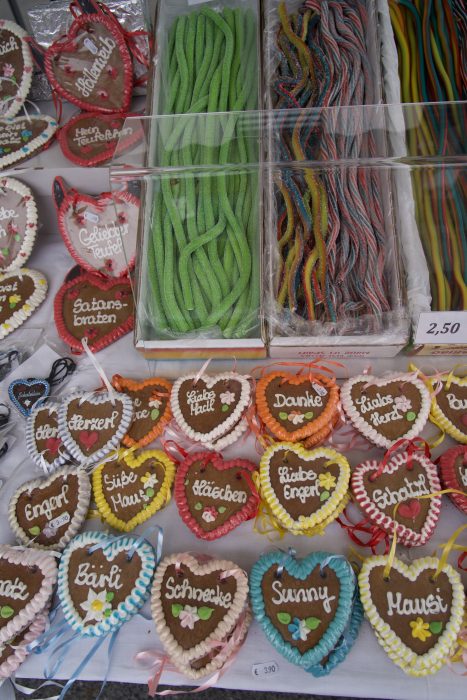
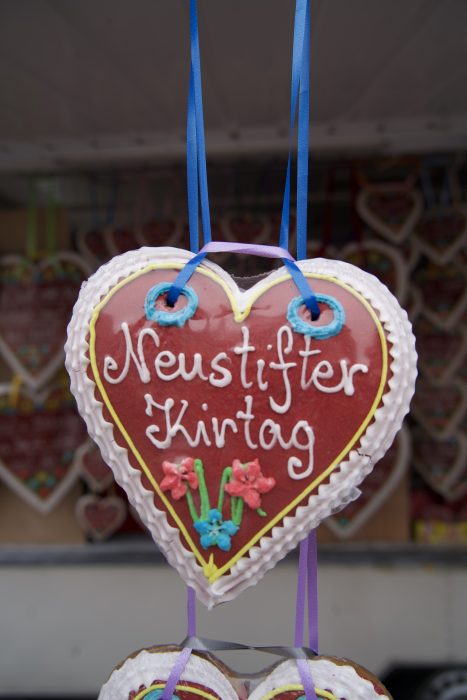
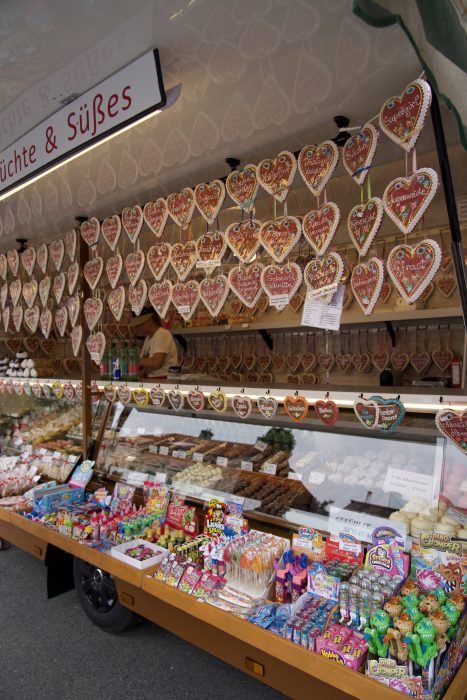
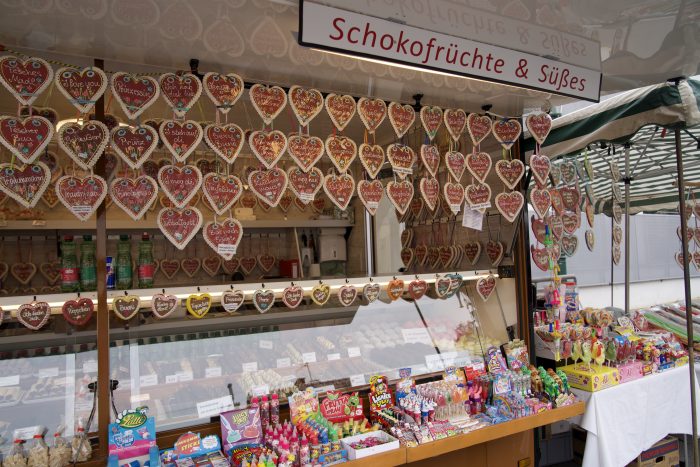
Etc
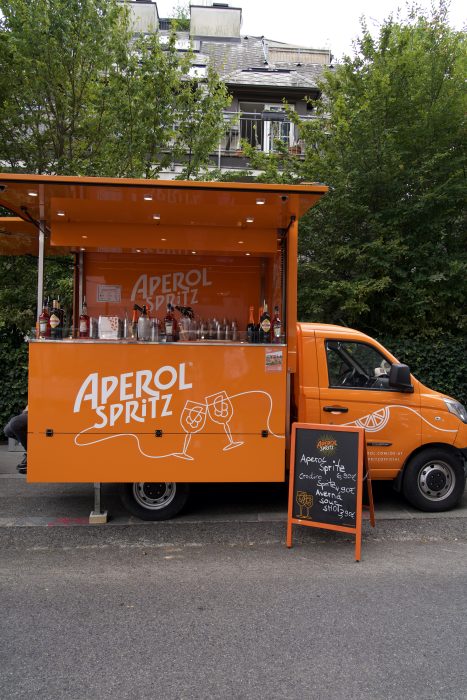
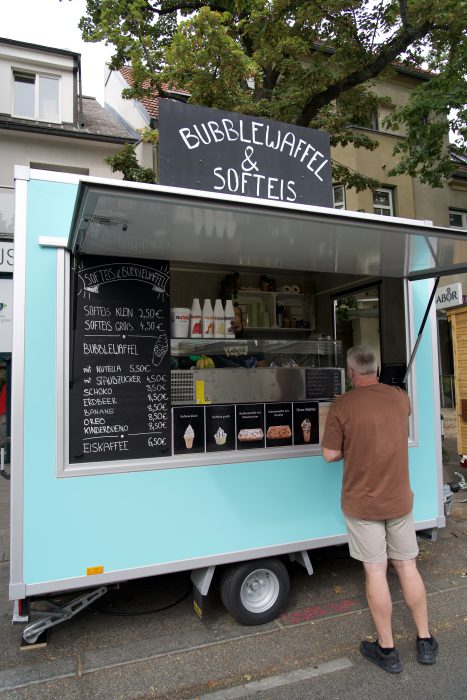
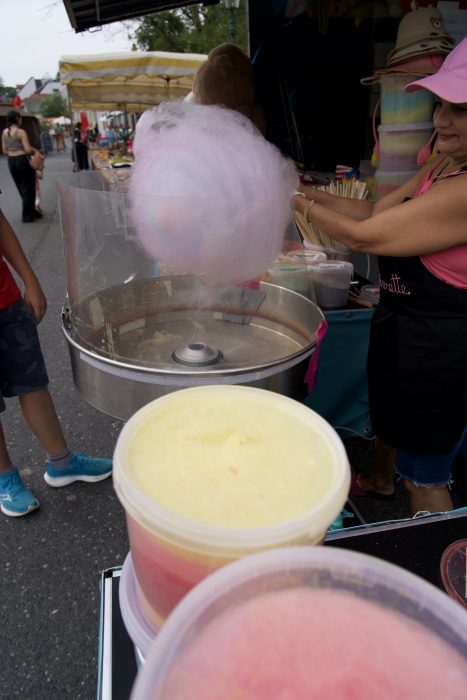
What To Drink
Beer
Typical Austrian beers are usually of pale lager type; dark beers are less popular. You can find beer Haus or go to your local heuriger to try them all out. Here’s a quick guide to the local choices:
- Märzen – pale lager. Brands to try: Murauer Märzen,
- Zwicklbier – cloudy, full-bodied blonde. Brands to try: Kellerbrauerei Ried Naturtrüb, Privatbrauerei Trojan Schrems Schremser Roggen Bier
- Weissbier – wheat beer. Brands to try: Fohrenburger Premium Weizen, Salzburg Weissbrauerei Hell Die Weisse.
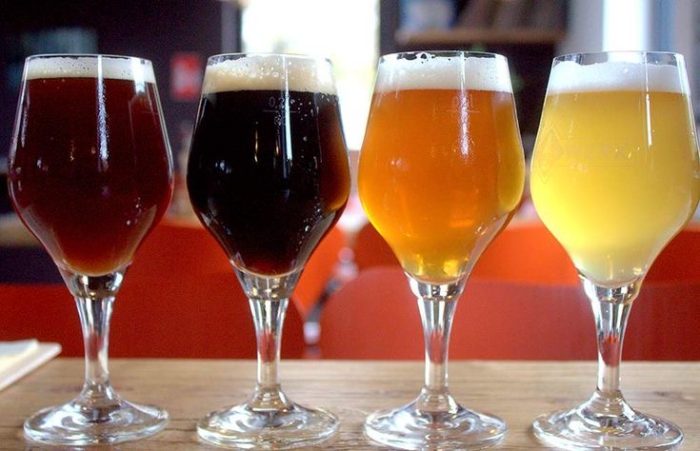
Wine
Austria produces small quantity of wine, but of high quality and rich variety. This is what the Kirtag festival is all about. The Heurigers time to shine and show off their product. Here are the top local varieties to help you order during the Kirtag festival:
- Riesling – the most famous Austrian wine, white and usually dry, refreshing, with a perfumed aroma and high acidity.
- Grüner Veltliner – the other renowned Austrian dry white wine, with quite low alcohol content, slightly acidic and with aftertaste of green fruits.
- Blaufränkisch – a highly appreciated red wine with red fruit and peppery spice aroma, of moderate acidity.
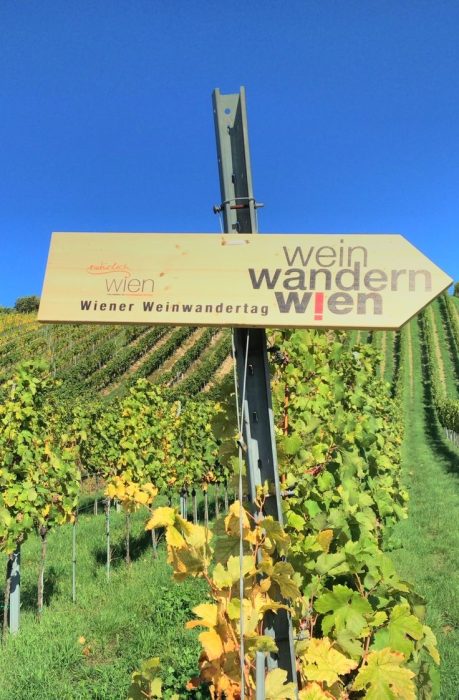
Spritzer
Austrian Spritzers, or Spritzen, are a refreshing and popular beverage choice, especially during the warmer months. This light and invigorating drink is a simple yet delightful blend of white wine and sparkling water, creating a bubbly, low-alcohol concoction that’s perfect for socializing. Traditionally served over ice with a slice of lemon, Spritzers are enjoyed for their crisp and clean taste, making them an ideal accompaniment to a wide range of Austrian cuisine, from hearty schnitzels to lighter salads. The Spritzer’s versatility and ease of preparation have made it a staple in Austrian cafes and beer gardens, embodying the country’s relaxed, convivial drinking culture. When I first moved to Austria, I struggled with the concept of “watering down my wine”. However, this is a great way to help stay hydrated and fight off those hangovers when you have an all day and night festival such as Kirtag.
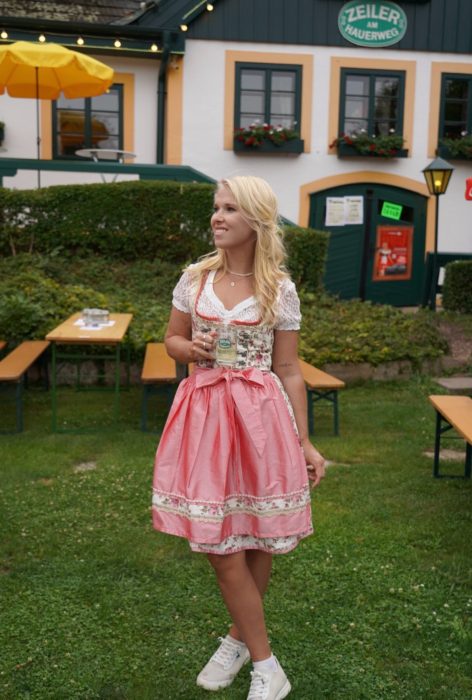
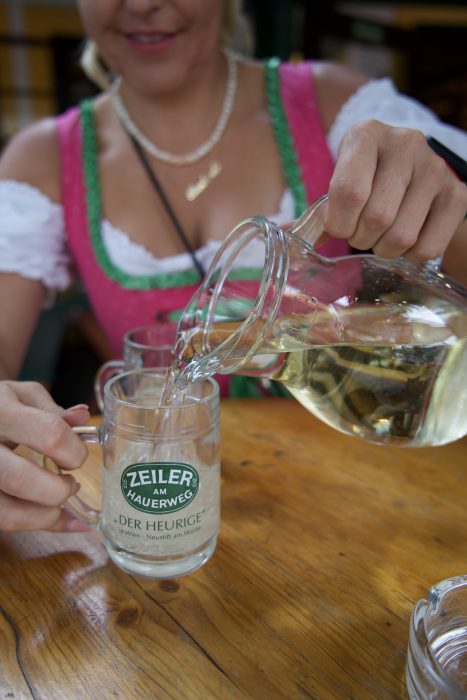
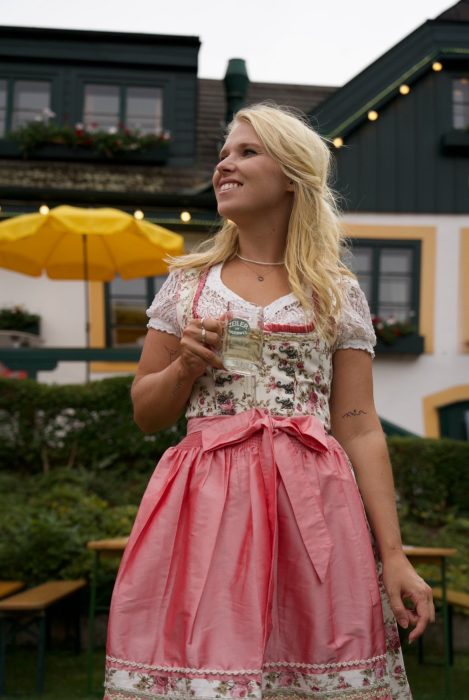
Schnapps
Viennese Schnapps is a cherished part of Austria’s rich culinary tradition, especially in Vienna, where this strong fruit brandy is enjoyed as both a drink of celebration and a post-meal digestif. Made from a variety of fruits, such as apricots, pears, plums, or apples, Viennese Schnapps is distilled to create a potent, flavorful spirit that captures the essence of the fruit in every sip. The most famous variety, Marillen Schnaps, made from apricots, hails from the Wachau region but is widely enjoyed in Vienna. Whether sipped slowly to savor its robust flavor or served as part of a social gathering, Viennese Schnapps reflects the city’s blend of tradition, craftsmanship, and a passion for good living. Here are some of the top local choices:
- Inländer Rum – it is a traditional “rum substitute” produced in a different process than real rum, but with a mixture of characteristic spices that give it a particular aroma and flavour.
- Marillenschnaps / Marillenbrand – apricot brandy.
- Obstler – brandy from other fruits, like plum.
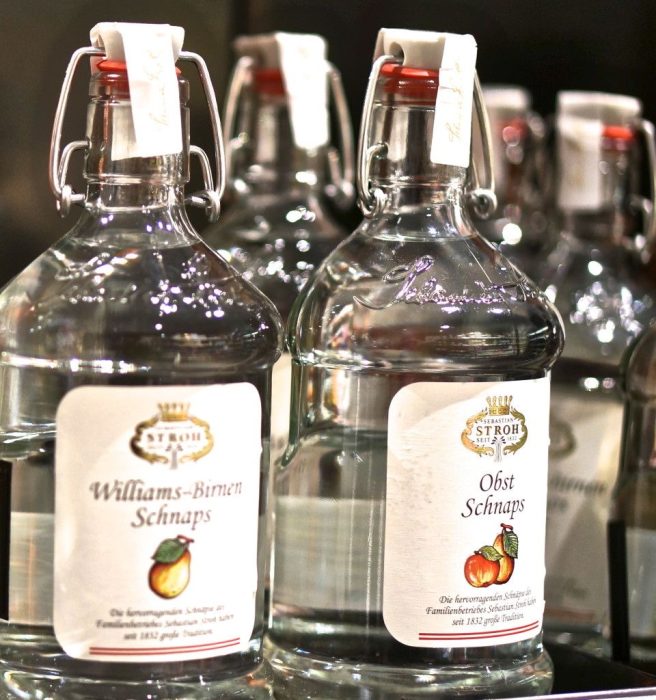
Best Heurigers
What is a Heuriger?
Heurigers are the name for traditional Taverns, where people gather for the traditional Austrian meals and drinks. These taverns typically specialize in local wines and rustic Austrian fare updated for the 21st century. Most will have indoor and outdoor seating available in garden like areas. They often have live music playing, too.
Best Heuriger’s at Kirtag
Wolff
Since 1609, the Wolff family has been spoiling their guests and friends with fine wines from their own cultivation and with good traditional cuisine. A special feature that you should definitely taste are the “small delicacies” that come from family recipes of the master confectioner Gerhard Wolff.
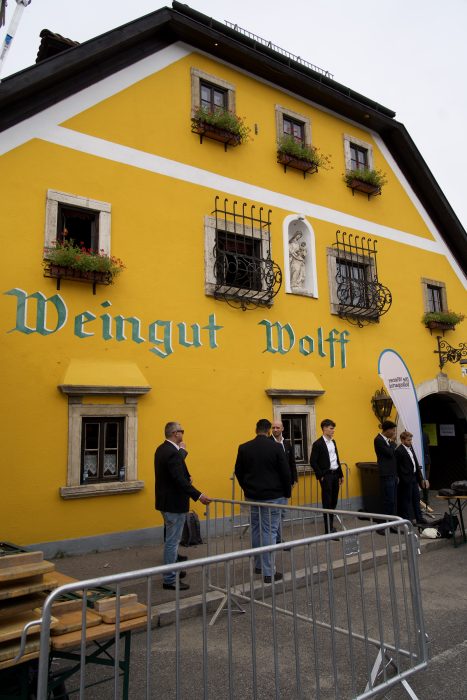
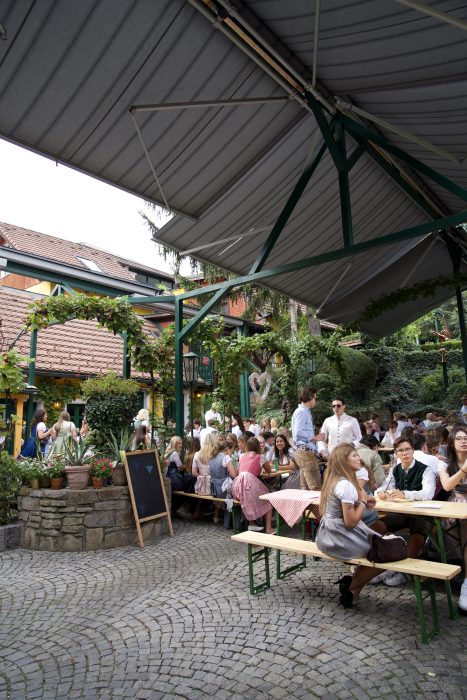
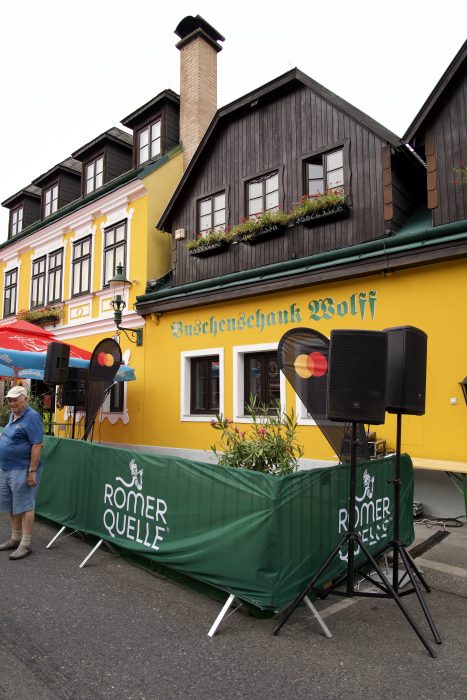
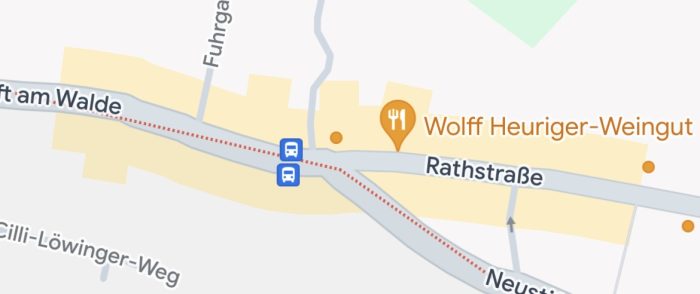
Schreiberhaus
The Schreiberhaus is considered by many guests as the “living room of Neustift” – not at home and yet at home. The lovingly designed, bright rooms invite you to enjoy and celebrate. Homely country house style, light pastel tones and a lot of light characterize the house. The stylish ambience offers an atmospheric setting for celebrations and events of all kinds! Experience magical moments in the middle of romantic vineyards on the outskirts of Vienna. In the warm season, flower-decorated terraces with a view of the vines invite you to sit together.
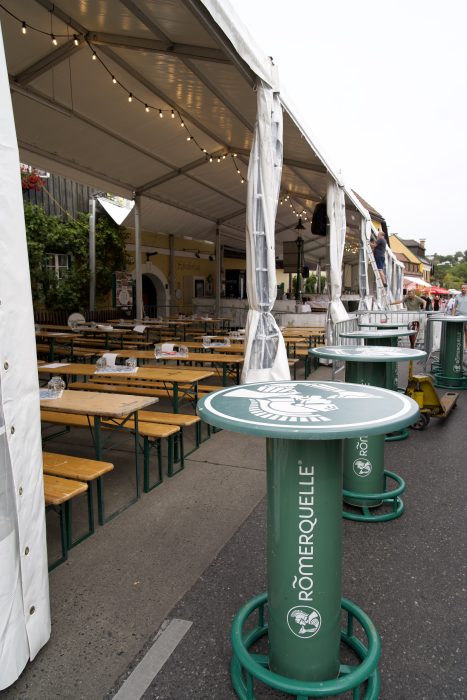
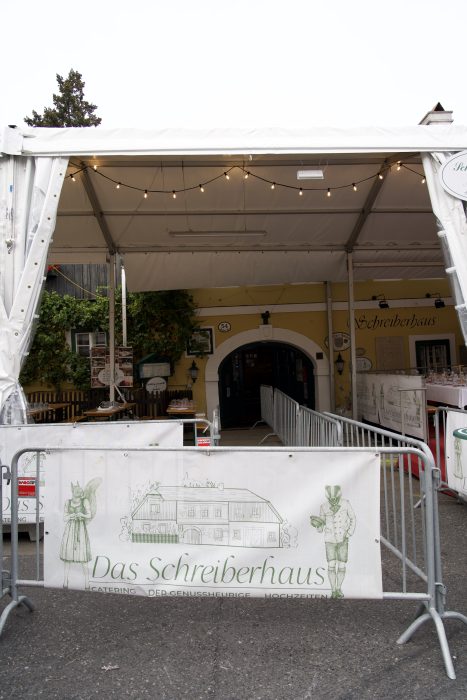
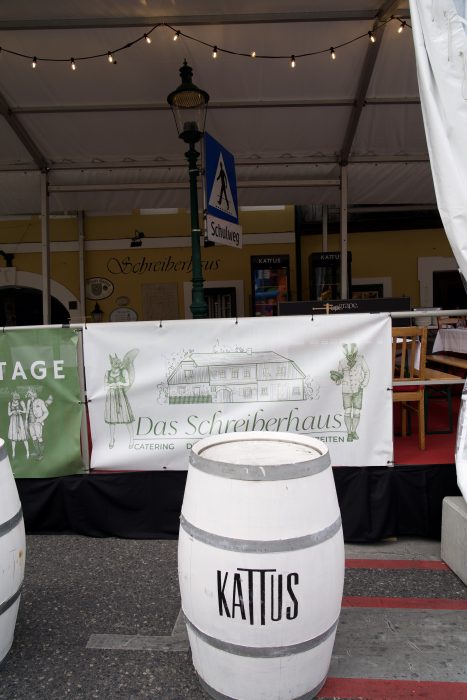
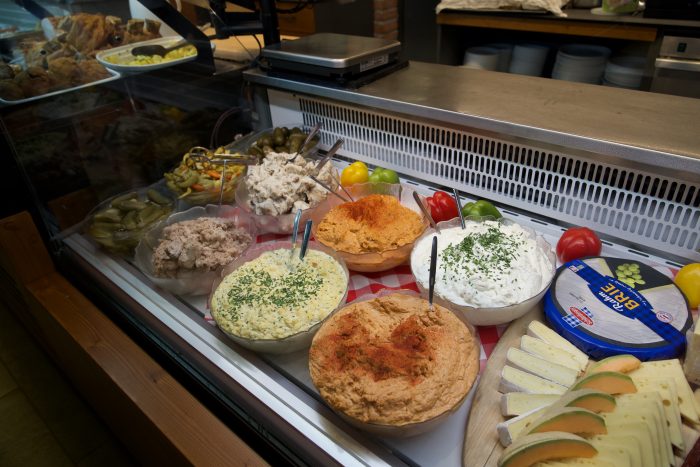
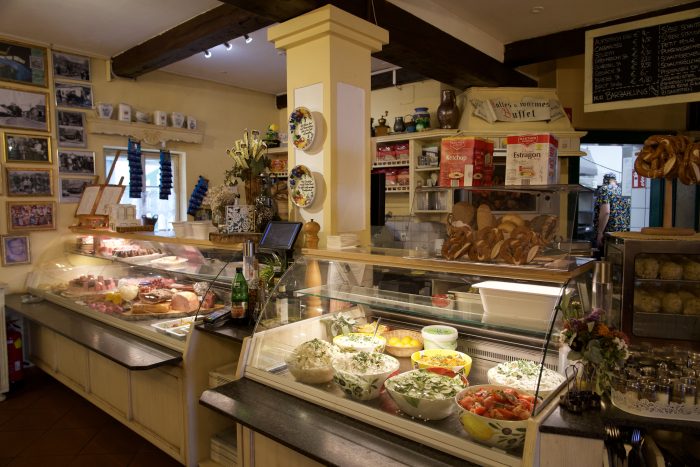
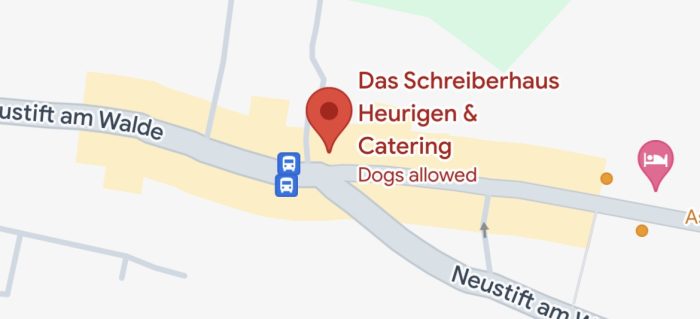
Fuhrgassl-Huber
The traditional foundation of the winery comes from Ernst Huber, who, with his wife Gerti in the 70s of the last century, completely reinterpreted the concept of the Wiener Heurigen: with its diverse rooms and the magnificent guest garden, the ‘Fuhrgassl-Huber’ soon developed into a trademark for the typical ‘Viennese conviviality’ – as autochthonous as the Viennese wine itself. The winery extends over 35 hectares in the 19th century. Vienna district, of which 26 hectares in Neustift am Walde and five hectares on Nußberg and Grinzing.
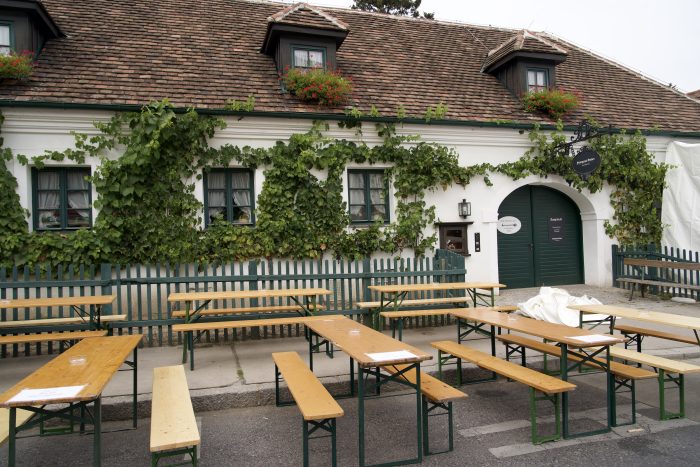
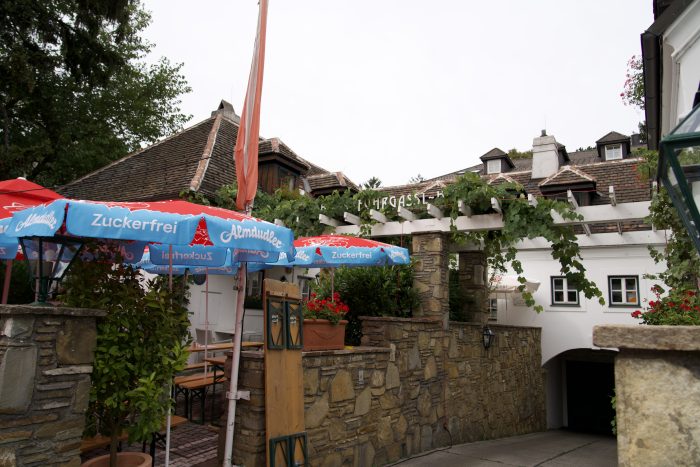
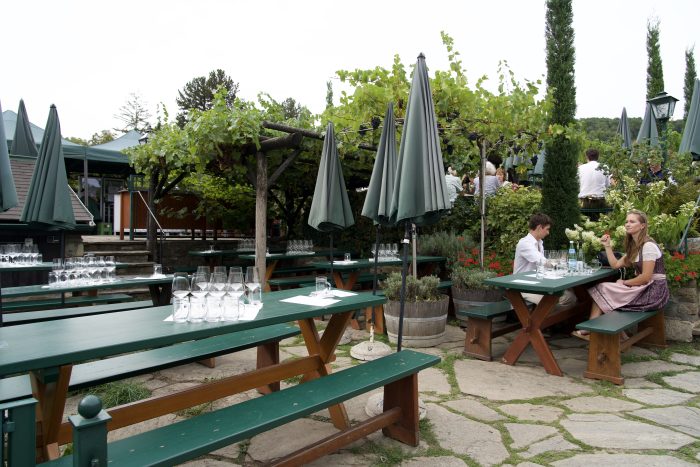
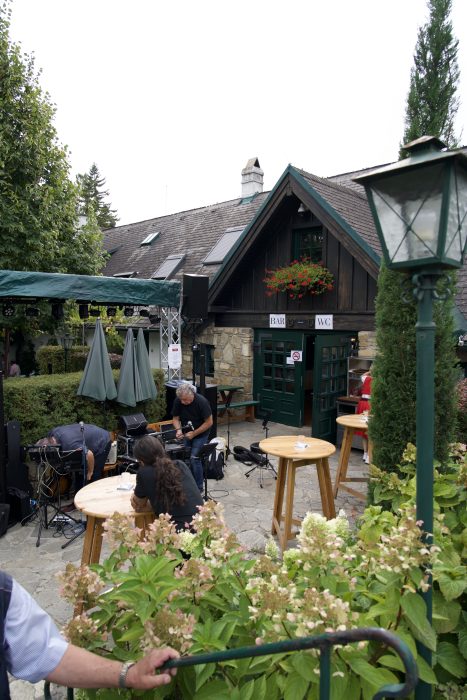
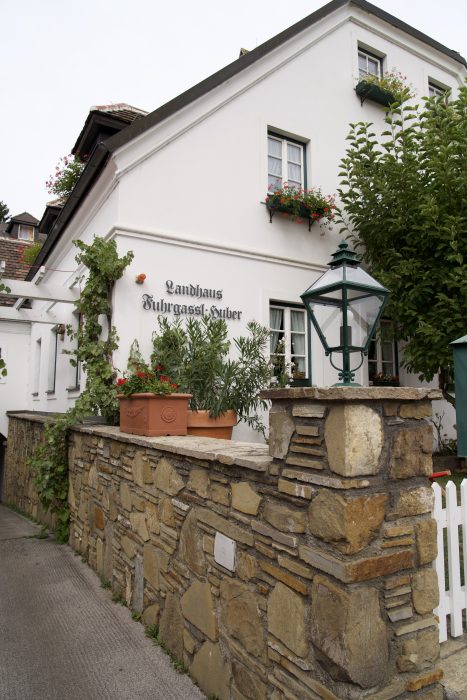
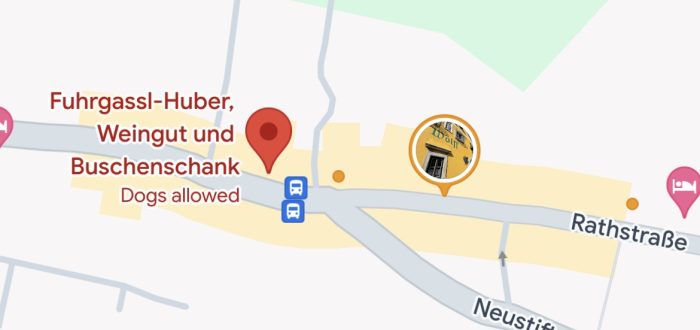
Zeiler am Hauerweg
The Heurige “Zeiler am Hauerweg” is located in a property built around 1600. In 1683, this building was burned down to the ground and rebuilt in the following years. Since 1802, this house has been the ancestral home of the Zeiler family, which was 1609 came from Franconia and has been based in Neustift am Walde since then. In the 90s, the Heurige was by Wolfgang and Veronika Zeiler rebuilt and enlarged.
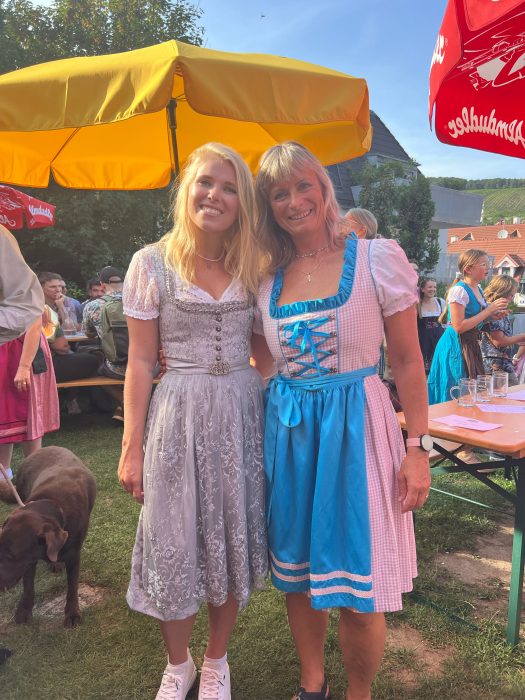
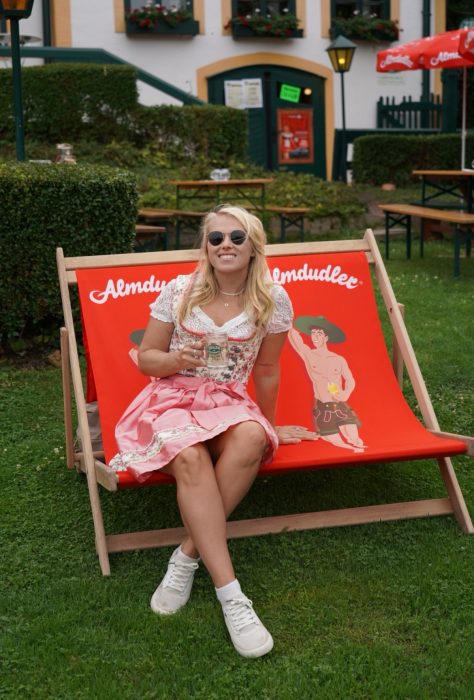
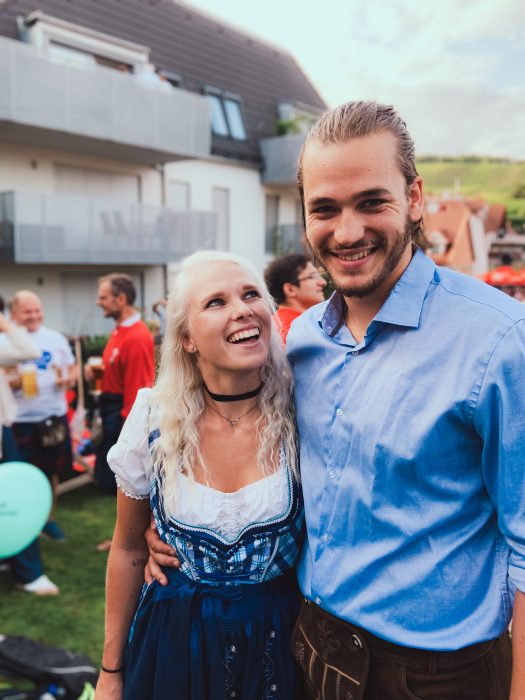
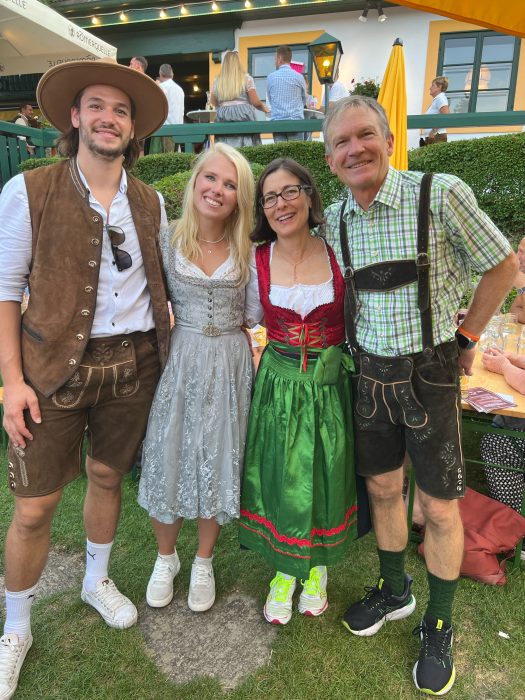
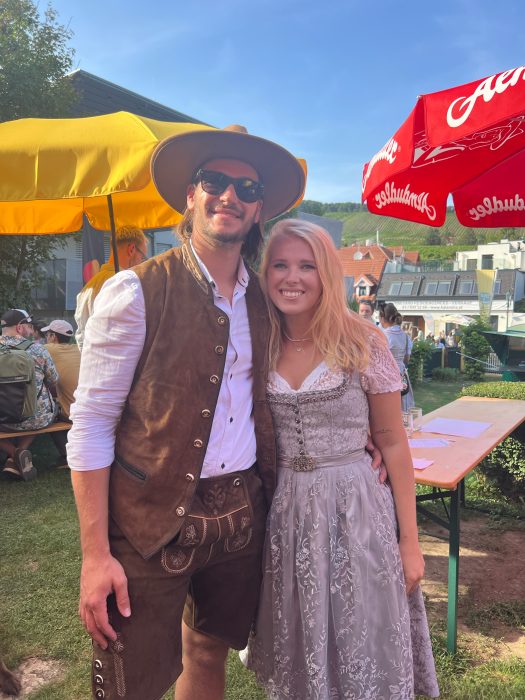
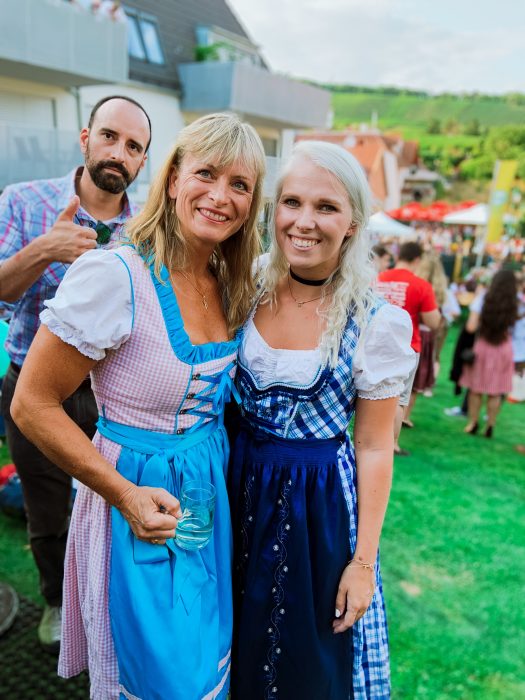
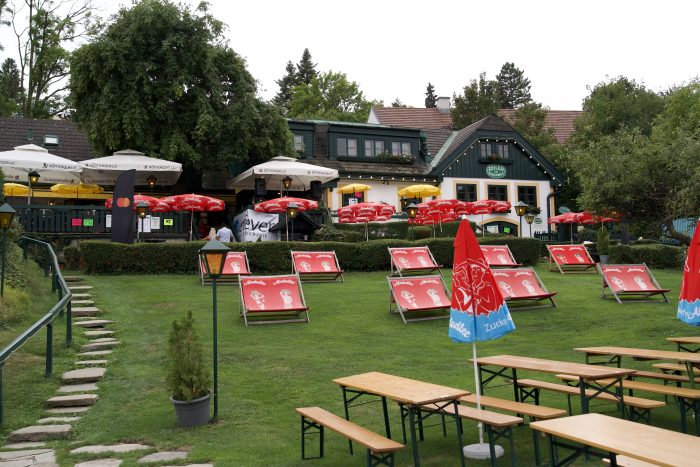
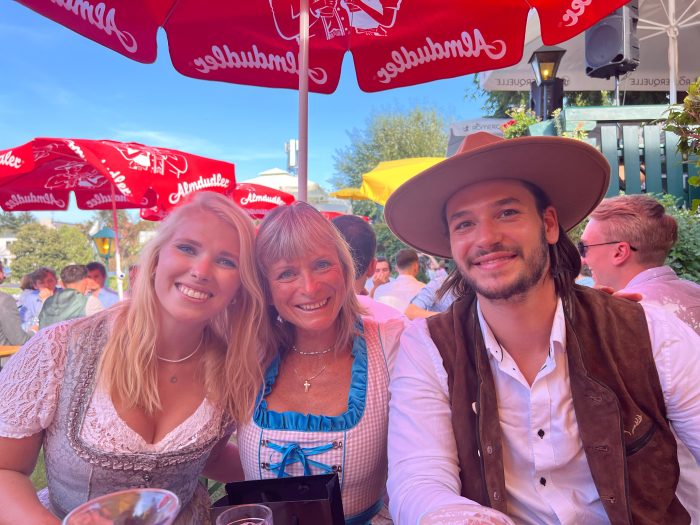
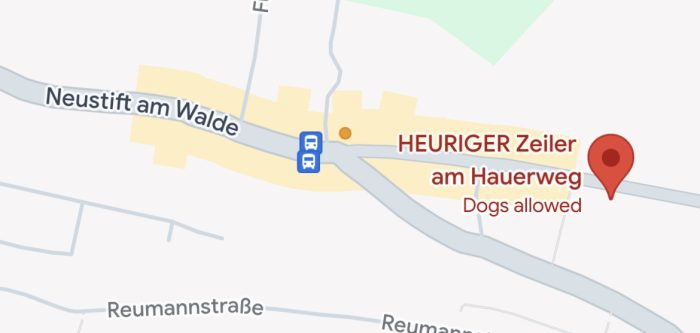
Tickets & Reservations
You don’t need a ticket to walk through the festival. If you simply wish to stroll the streets and browse the vendors outside this is completely free! If you wish to go inside for a table you have two options. You can make reservations ahead of time (usually sold out months in advanced), or you can wait patiently and see if there are free spaces available when you arrive.
Things may be less busy during the day, but Saturday evening will always be absolutely packed, with the party atmosphere growing with each passing hour. The organizers suggest over 100,000 people attend across the four days. You might want to go during the day to peruse the street booths, then grab a free spot at a wine tavern late afternoon / early evening before things get too frantic (assuming they’re not all reserved).
Dress Code
‘Tracht’ is the word used in Austria for their traditional clothing and fashion. It is worn very often in the Austrian countryside, less in cities – only for special and formal occasions like weddings or receptions and of course, Kirtag!
For Women
Women wear ‘Dirndls’, a close-fitting bodice combined with an apron in different colors; either it is sleeveless and worn with a cotton and lace blouse, or it has sleeves and a high neck.
What makes a Dirndl?
The main elements that make up a Dirndl are the wide skirt attached to a “Leiberl,” or fitted bodice, an apron (often with a hidden pocket), and a short Dirndl blouse. The skirt usually starts at the waist or a little lower. You can choose between various lengths, depending on current fashion trends. The bodice used to be a separate item, but since the 1930s it has been sewn to the skirt. It comes in many different styles: with a high or low, round or square neckline. It is fastened with buttons, hooks, or ribbons.
The Dirndl blouse accentuates the style of your Dirndl; choose between delicately hand-embroidered pieces, blouses with extravagant ruffles and lace, or simple ones with straight sleeves. Finally, there is the apron. Formerly worn to protect the dress underneath, it is now a purely decorative item. There are aprons for everyday wear, and aprons for festive occasions which are usually of a more elegant fabric than the simple linen or cotton ones. Before you tie your knot, be sure to check on which side to place it. Otherwise, you might unwittingly send out the wrong message (a knot on the left means you are single, right = married, front = NOYB and back= widowed or service worker).
If all these options seem daunting at first, remember: the most important thing is to have fun with the many different colours and patterns and to choose a Dirndl that fits your personality. To truly rock a Dirndl you have to make it your own!



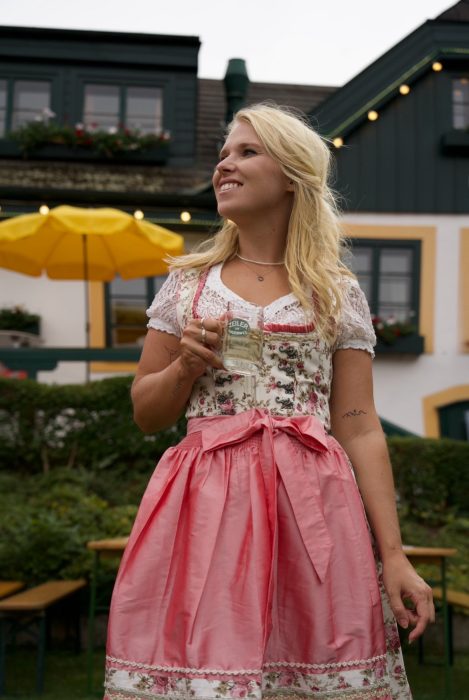

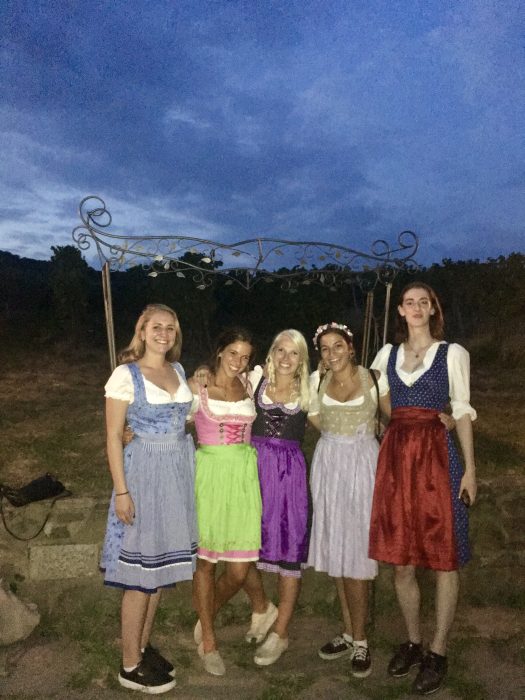
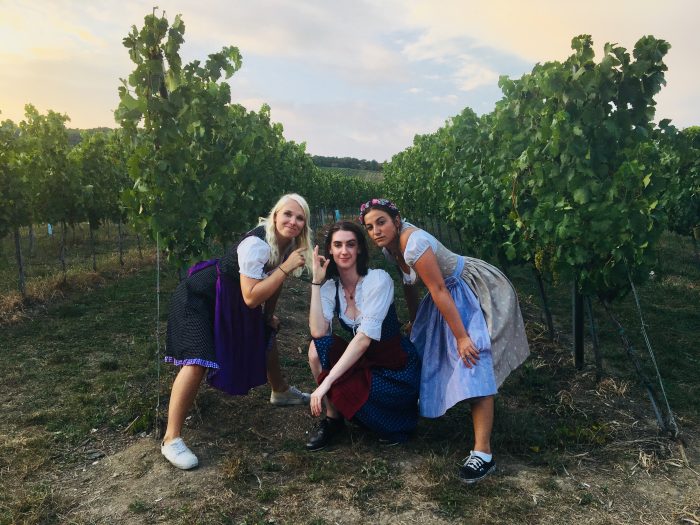
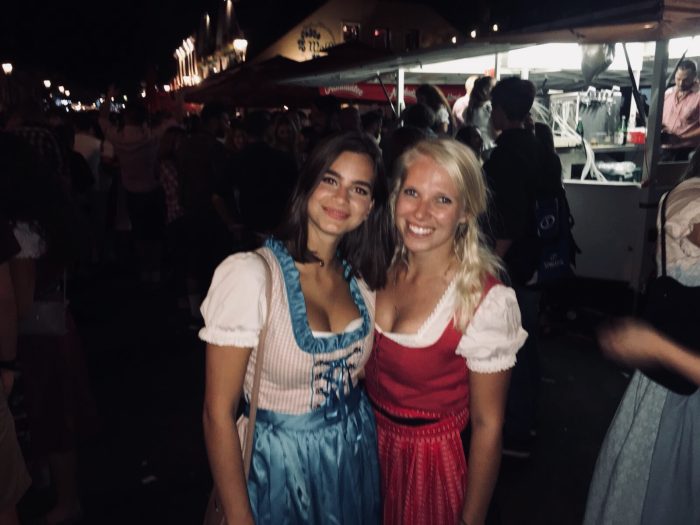
For Men
Men wear ‘Lederhosen’, knee-length trousers or short-pants made from leather, worn with rustic shoes and wool socks.
What exactly are Lederhosen?
The men’s traditional attire is no less fascinating than the women’s: Lederhosen, or “Loden” are customary among boys and men all over the German-speaking Alpine region. They are made mostly from deer or any other soft leather that is comfortable to wear.
The characteristic elements are the suspenders, braces, a flap at the crotch, and a knife pocket at the sides. Men in the Alps wore these trousers to work for centuries, decorating them with nature motifs that reflected their surroundings in the Alps.
Today, Lederhosen are mostly reserved for festivities such as weddings and festivals — but more on that later!
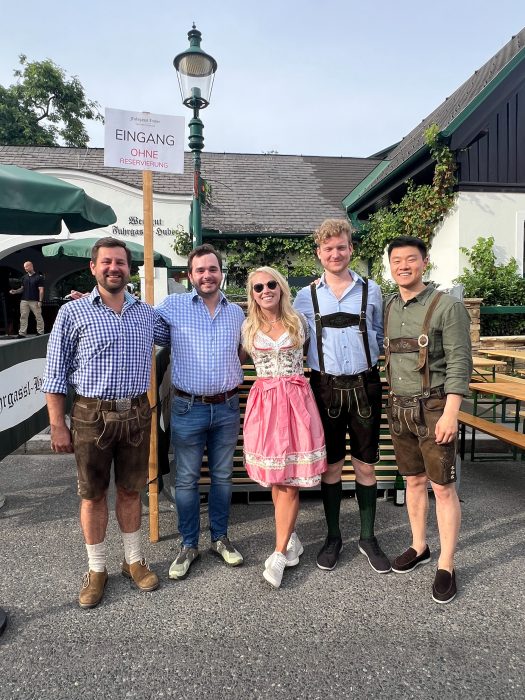
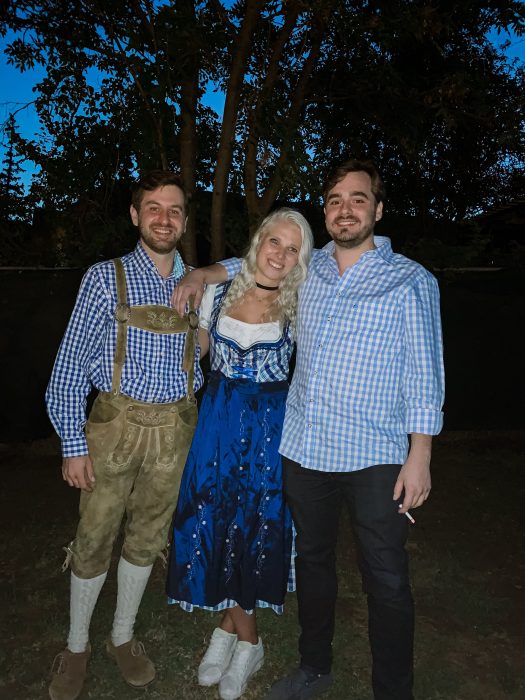

Do You Have to Wear Tracht?
In short, no you do not have to wear tract to celebrate Kirtag. There is no official dress code that is enforced on the streets or in the Heurigers. However, you will seem that the vast majority of people will be in tract as it is simply more fun!
You do not have to spend a fortune to participate either. While many traditional dirndls and lederhosen can start around €200 in the official tracht stores, I have personally owned around 8 different dirndls as I buy mine secondhand! I highly suggest you head to the local Humana shops and look at their selections! My pink floral one cost around €40, my blue was around €30 and the red/ black + purple / black were maybe just over €20 each. You can absolutely find great deals when you shop second hand! I often donate or give friends some of my dirndls whenever I feel like getting a new one in rotation (after 9 years of living here sometimes it’s fun to switch it up).
Top Activities
Opening ceremony
The opening ceremony of the Kirtag in Vienna is a lively and colorful event that sets the tone for the entire festival. Rooted in Austrian tradition, the Kirtag’s kickoff typically features a parade of locals dressed in traditional attire, including lederhosen and dirndls, accompanied by brass bands playing folk music. The festivities often include the tapping of the first beer keg by local dignitaries, signaling the official start of the celebration. From this moment, the Kirtag comes alive with joyful energy, with stalls offering local delicacies, crafts, and, of course, wine. The opening ceremony embodies the spirit of community and festivity that makes the Kirtag a beloved tradition in Austria.
Daily Crown Parade
The Hauerkrone Parade is one of the most cherished highlights of the Kirtag festival, celebrating the rich winemaking traditions of Austria. “Hauerkrone,” meaning “vintner’s crown,” symbolizes the importance of the local wine industry and the deep connection between the land and its people. During the parade, local vintners, or “Hauers,” carry ornate crowns crafted from grapevines, leaves, and clusters of grapes, representing a successful harvest. Dressed in traditional costumes, the participants parade through the festival grounds accompanied by folk music, dancers, and cheers from the crowd. The Hauerkrone Parade not only honors the region’s winemaking heritage but also infuses the Kirtag with a festive, communal spirit, bringing together locals and visitors to celebrate the fruits of their labor.

Kids Playground
You might be wondering if Kirtag is an event you can bring the whole family to. Yes! There are so many families with small children here daily. There are games, toys and even small carnival rides for the little ones. Many families will spend the afternoon enjoying the festivities and then leave in the evening before the party gets too wild.
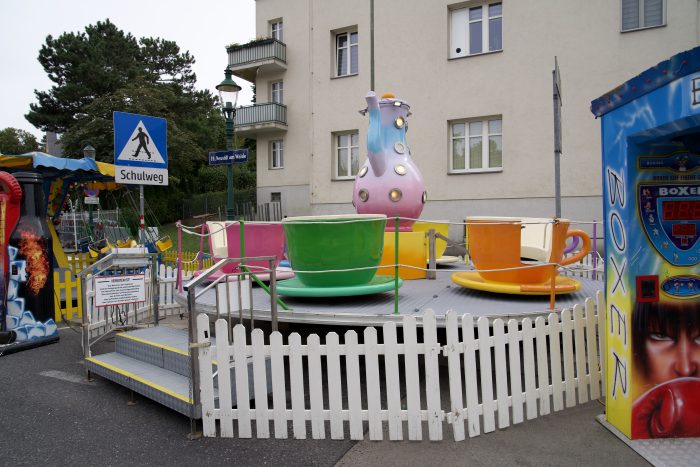
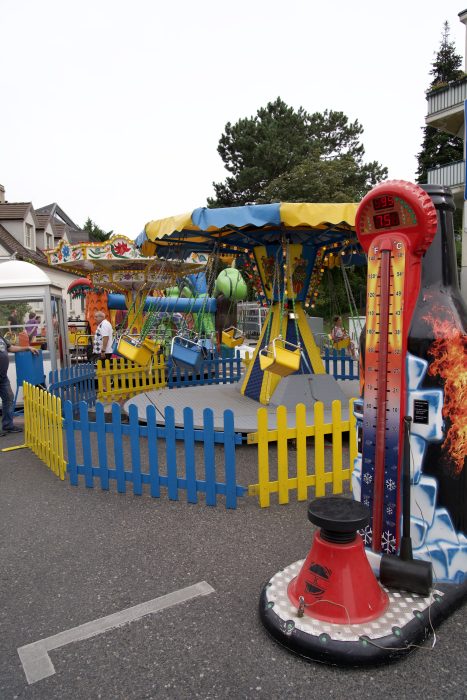
Similar Festivals
Jahrmarkt – Kitzbühel, Austria
The Jahrmarkt in Kitzbühel, Austria, is a lively annual fair that blends tradition with fun, attracting both locals and visitors to the picturesque alpine town. Set against the stunning backdrop of the Austrian Alps, the Jahrmarkt features a vibrant mix of amusement rides, market stalls, and food vendors offering traditional Tyrolean delicacies. It’s a festive celebration that brings the community together, with children enjoying the rides and games, while adults browse through local crafts and indulge in regional specialties like sausages, pretzels, and mulled wine. The event often includes live music, dancing, and cultural performances that showcase Kitzbühel’s rich heritage, making the Jahrmarkt a must-experience tradition that captures the spirit of Tyrolean festivity.
Oktoberfest – Germany
Oktoberfest is the world’s largest beer festival, held annually in Munich, Germany, and is a celebration of Bavarian culture, beer, and tradition. This iconic event, which typically lasts 16-18 days from late September to the first weekend in October, attracts millions of visitors from around the globe. Oktoberfest is famous for its massive beer tents, where traditional Bavarian breweries serve their special Oktoberfest brews in large steins, accompanied by hearty food such as pretzels, sausages, roast chicken, and pork knuckles. Beyond the beer, the festival features lively music, folk dances, parades, and carnival rides, all set against a backdrop of people dressed in traditional lederhosen and dirndls. Oktoberfest is not just about beer; it’s a vibrant celebration of Bavarian heritage and camaraderie that has become a global symbol of festivity.
More to do in Austria
Looking for more things to do in Vienna? Or perhaps you wish to venture out further into Austria.
Need More Travel Tips?
💳 WANT TO TRAVEL FOR FREE?
Want to travel for free, simply as a reward for spending money you already had to spend ? I love my Capital One travel card and I think you will too! You get unlimited miles on every purchase with a card that fits your lifestyle. Plus 10x points on hotels and 5x points on flights booked through their travel portal!!! If you ever wanted to travel in luxury, this is the card for you. Check out our referral link!
🧳 NEED TRAVEL INSURANCE?
Peace of mind comes when you book travel insurance. You do not need to worry about flight cancelations, lost luggage, or any illnesses while traveling. Check out the first ever specific Digital Nomad insurance we use here : SafetyWing. ETKA, Vistors Coverage , or Insubuy.
NEED AN eSIM?
Check out our article on the top eSIM Providers for Digital nomads and world travelers:
Top eSIM Providers for Digital Nomads: Streamlining Connectivity While Traveling
NEED a Rental Car?
Check out the best options for renting a car for your trip to give you more freedom and flexibility while you travel ! Check out Rent A Car here.
Want Lounge Access when Flying?
If you want access to over 1,500 lounges in 600 locations then you need to check out Priority Pass!
Happy travels xx
Like it? Pin it!

Follow our adventures on social!
